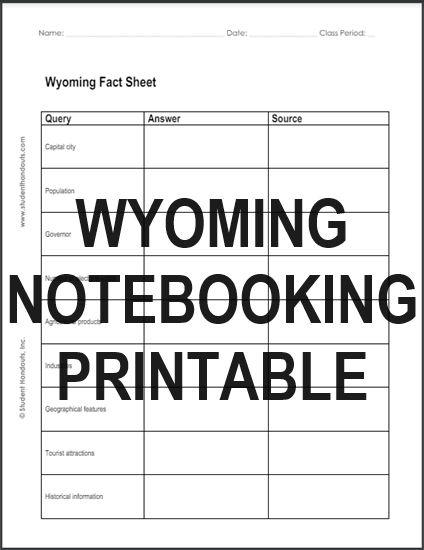Click here to print. Students research and report on the state of Wyoming. Answers will vary.
The economy of Wyoming is driven by a combination of natural resources, agriculture, and tourism. The state is rich in minerals and energy resources, particularly coal, oil, natural gas, and uranium. Wyoming is one of the largest coal producers in the United States, and its energy sector significantly contributes to the state's revenue through extraction and mining activities.
Agriculture also plays a vital role in Wyoming's economy, with cattle ranching and sheep farming being predominant. The state's vast open lands support these activities, along with the production of hay, barley, and sugar beets.
Tourism is another key economic driver, with millions of visitors flocking to Wyoming's national parks and natural attractions, such as Yellowstone National Park and Grand Teton National Park. These sites offer outdoor recreational activities, boosting the hospitality and service sectors.
Despite its small population, Wyoming's economy benefits from its natural wealth and scenic landscapes, fostering a robust economic environment centered around its unique resources and attractions.
|














